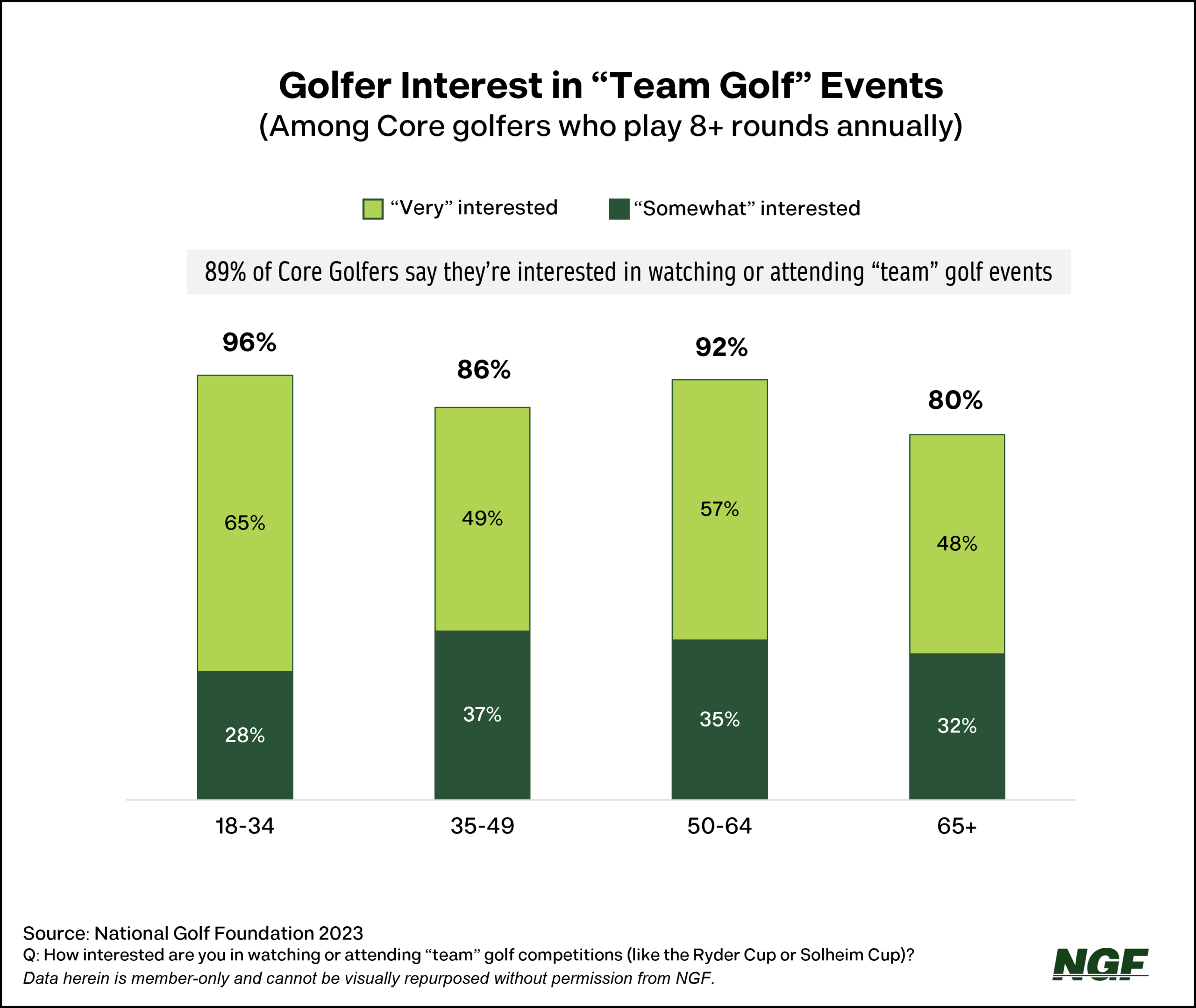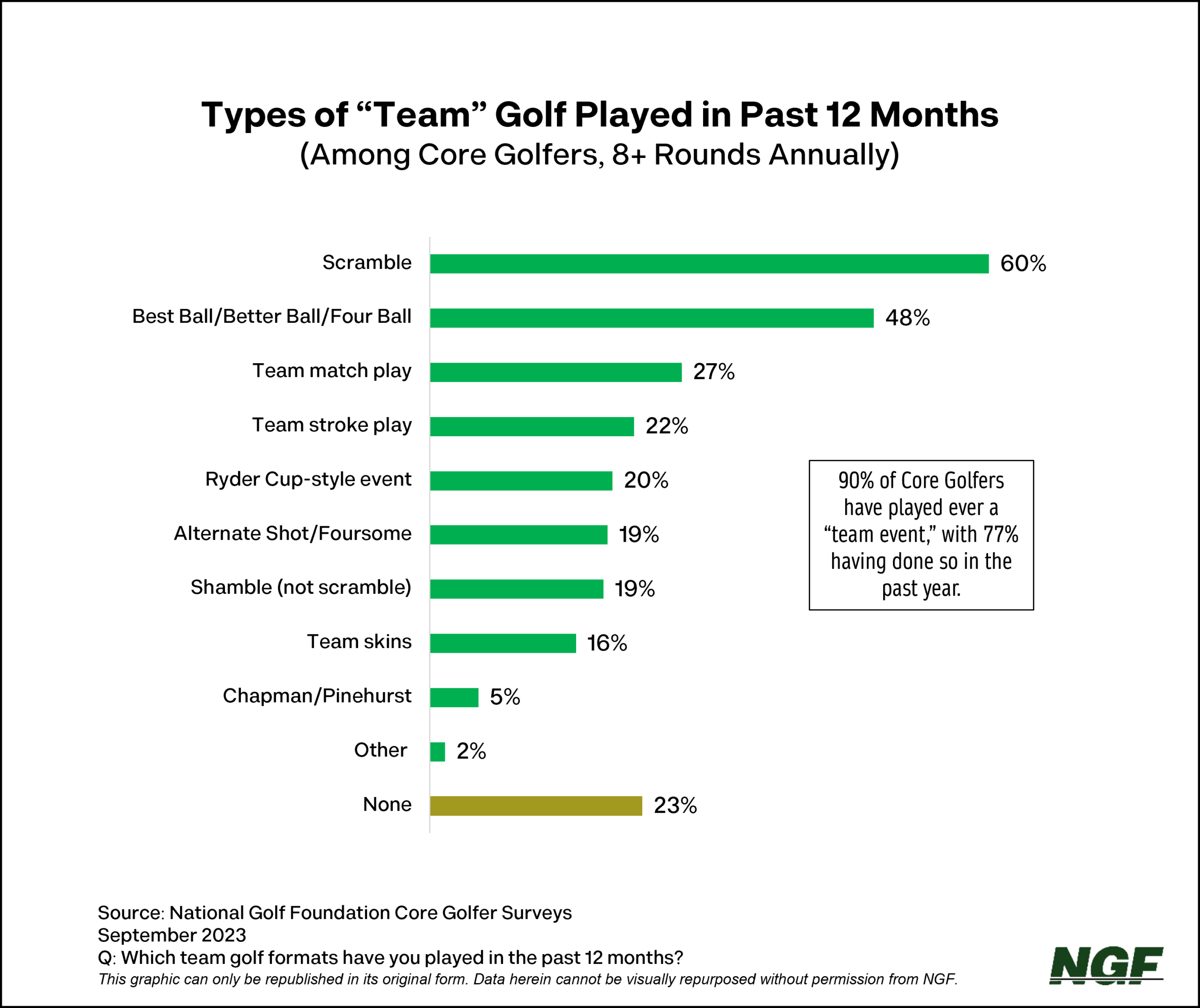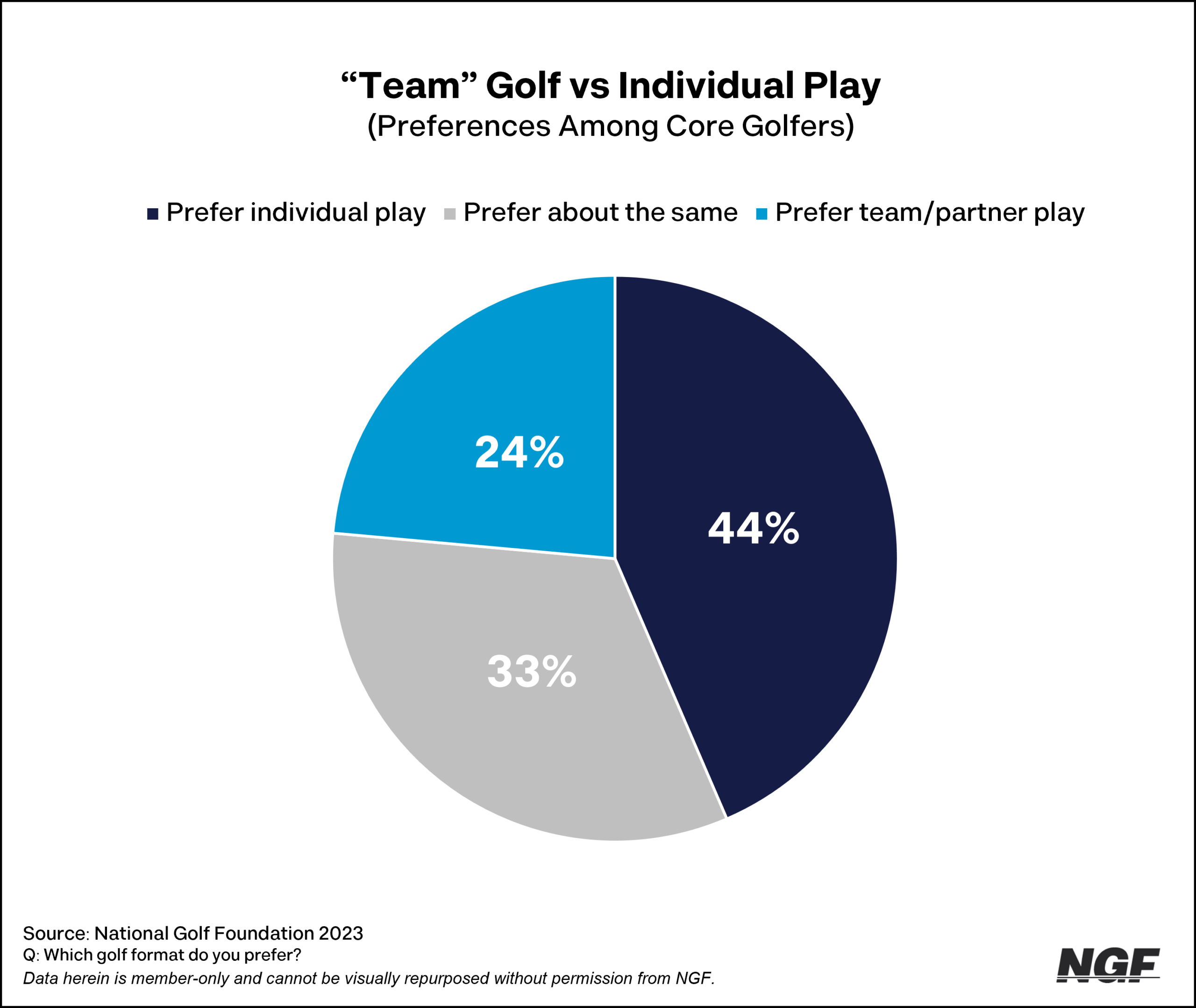Team golf takes centerstage – at least in the world of professional golf – with the Solheim Cup and Ryder Cup played in Europe in back-to-back weeks.
The top female golfers from the U.S. and Europe are in Andalusia, Spain, for the 18th edition of the biennial Solheim Cup matches (Sept. 22-24), while the men play the following week in Italy for the first time in the history of the Ryder Cup.
In a survey of NGF’s Core Golfer panel (8+ rounds annually), 89% of respondents said they’re interested (“very” or “somewhat”) in watching or attending team golf competitions like the Ryder and Solheim Cups. The incidence was slightly higher among men than women.
Of note is that the highest proportion of those golfers interested in watching or attending these team competitions was in the 18-34 age group. The lowest? The 65-and-over set.

This likely speaks to the experiential component. For avid or passionate golfers, it’s about being a tangential part of a prominent event within the golf community, but the data also indicates that a more a golfer plays the less invested they are in “being a fan.”
Types of Team Events
Most Core golfers say they’ve played in at least one team event within the past 12 months, whether that be a charity scramble, corporate outing with colleagues and/or clients, member/guest or member/member tournament, buddies match, or even a multi-player Ryder Cup-style clash.
Given that most outings are of the scramble variety, this format is most commonly cited by those surveyed.

But the frequency of individual play far outweighs team play.
The opposite is found in recreational tennis, where doubles play is far more common than singles.
Appeals and Preferences
While more Core golfers say they prefer individual play versus team or partner play, almost three quarters (72%) say they would play in more team events or competitions if they were more widely available. This interest is again higher among male golfers (74%) than female golfers (60%).

Meanwhile, approximately two thirds point to camaraderie and the social aspect as being the biggest appeal of team play – cited by 64% of respondents.
Competing as part of a team and trying to win for someone or something else – as part of a bigger group – is a close second at 56%. Core golfers were given a short list and asked which two choices best described the appeal of team play for them. About 30% noted the excitement and fun, while one quarter of those surveyed said they liked the lower (or, for some, higher) pressure or expectations to perform or contribute to a team. Another 9% cited the uniqueness of a team format as having the most appeal.
“Doubles Golf”
The intent of most recreational team formats is to enhance the social element while providing for “backup” from playing partners, meaning less stress and more fun.
Among the dedicated efforts that have sought to change the idea that golf is purely an individual pursuit is “Doubles Golf,” which was co-founded several years back by Jack Nicklaus and the originators of PGA Junior League Golf. The vision is to bring more juniors, women, and young adults into golf, while providing another outlet for seniors to continue playing.
“We created it with the vision that it would be the perfect league instrument, a perfect league format, because it mimicked the format that we used when we created junior league golf,” said co-founder Bob Longmire, a longtime sports industry marketing executive.
Doubles Golf launched in early 2020, less than a month before Covid really hit. The timing was less than ideal, but the movement is still kicking and expects to have 15,000 registered two-person teams by the end of the year. The differentiator is its rating system for teams rather than a standard handicap, allowing friends, couples, parents and children, grandparents and grandkids, etc. to play and compete together as a rated team.
“If we can get another couple million golfers playing doubles golf and getting a doubles golf rating and ranking, maybe half of them will eventually decide they want to USGA handicap for their singles game,” says Longmire. “We’re not trying to scale to a million ourselves. The whole idea was it was either going to be the PGA or the USGA or somebody who takes this like the Junior League and takes it scale.”
The appetite for team/partner golf seems to be there among consumers.
But the questions remain:
Can team (non-individual) golf gain a real foothold in the U.S.?
And for course operators, do you have enough team events on your calendar to satisfy customer interest?



